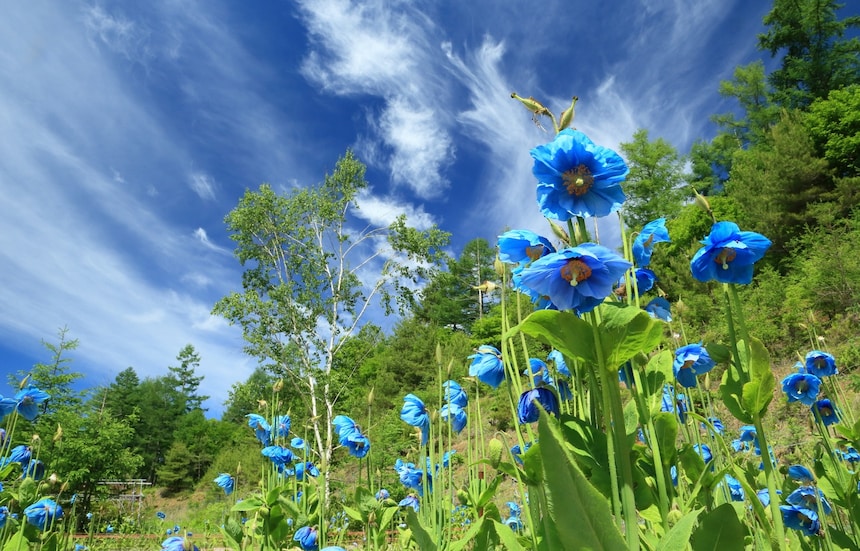The 6 Most Beautiful Villages in Japan
6. Chizu (Tottori)
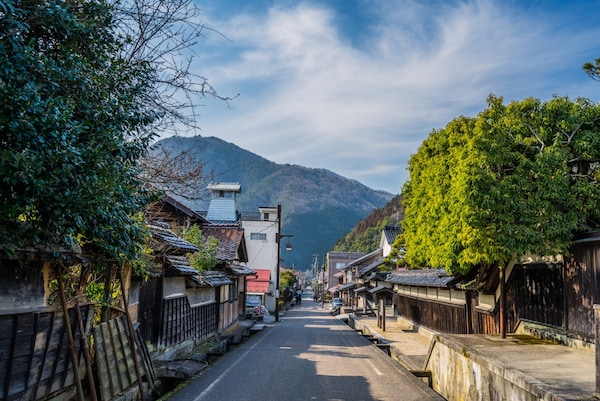
Chizu bills itself as “The Town of Cedars.” Located in the southeastern part of Tottori, where its western and southern borders touch Okayama Prefecture, the area encompasses the 1,000-plus-meter Chugoku Mountain Range, as well as streams that weave through gorges to form the Sendai River, which flows into the Sea of Japan. In fact, this town is the source of the sand that makes up the Tottori Sand Dunes.
Over 90 percent of the town’s total area is covered with forests, represented in particular by Japanese cedars, the greenery stretches as far as the eye can see. Chizu’s forestry industry has over 350 years’ experience planting trees, exemplified by a centuries-old man-made forest called Keicho Sugi— named for the Keicho Era (1596-1615) in which the trees were said to have been planted.
With its long history of forestry in the Yoshino and Kitayama mountains, Chizu is one of the most reputable wood-producing regions in Japan. Moreover, Chizu prospered as the biggest stopover town in Tottori in the Edo Period, complete with a magistrate’s office and a roadside bulletin board. Even the daimyo had a tea house here.
The strong presence of culture and history from ancient times, along with the sense of nature and a time that has left its mark, will make you feel nostalgic no matter where you turn.
5. Otama (Fukushima)

Located near the middle of Fukushima, the village of Otama sits on the central thoroughfare of the prefecture, with Japan National Route 4 and the Tohoku Expressway running straight through it. The symbol of the town is Mount Adatara, while the surrounding expansive plateau is filled with an abundance of rice paddy fields, vegetables, fruit trees and livestock. This “big little village” delivers delicious food to urbanites year-round, and is home to many onsen, or hot springs, as well.
As of October 2015, Otama is also the first municipality in the world to pair with Machu Picchu as its sister city—a distinction made possible because an Otama native, Yokichi Nouchi, immigrated to Peru in 1917 to help construct the railway leading to the famous “lost city.“ He also built the hydraulic power plant and hotel in the remote village, and even served as Machi Picchu's chief for two years.
4. Kawane-Honcho (Shizuoka)
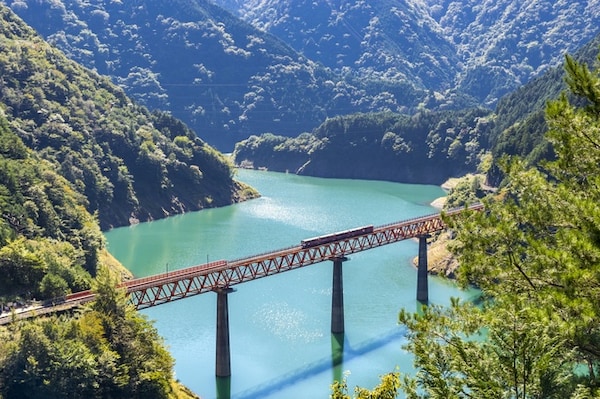
Kawane-Honcho lies in the center of Shizuoka. Forests account for 94 percent of the town’s area, and it's the only nature conservation area on Japan's main island that's also a registered UNESCO Eco-Park. In 2009 it was selected as one of Japan’s Top 100 Villages.
The Oi River gently flows through the center of the town from its point of origin in the Southern Alps. A steam locomotive runs along the river, representing Japan’s only rack railway line, a system that moves rail cars up and down steep slopes using a toothed rail track. The area is home to one of Japan’s three largest refined tea fields, and the mountains and ravine dazzle with the colors of the season.
The town is home to Yume no Tsuribashi, or the “Bridge of Dreams.” Rumor has it that if you wish for love on the center of the bridge, it will come true. Looking down from the bridge, you can see a gorgeous emerald green lake reflecting the colors of the season. You can get a 360 degree view of the ravine from the watch tower at the end of the bridge. You can also find the even higher Hiryubashi Bridge further upstream.
3. Tsurui (Hokkaido)
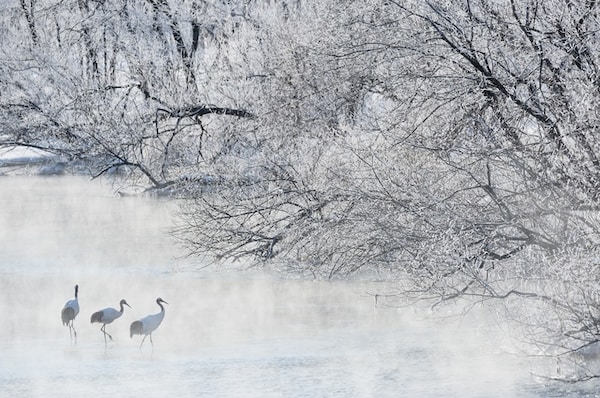
The village of Tsurui is located in eastern Hokkaido close to the center of Kushiro Subprefecture. To the east lies the town of Shibecha, while to the south Kushiro-shitsugen National Park is sandwiched by the coastal Kushiro City and Kushiro Town, the financial centers of eastern Hokkaido, while the town of Akan sits to the northwest. The total surface area of the village is an impressive 571 square kilometers (220 square miles), measuring 23 kilometers (14 miles) from east to west and 42 kilometers (26 miles) from north to south, yet it remains a simple dairy farming region with a population of just 2,600 people.
The soil surrounding the outer rim of the Akan Caldera flows into the basins of the Kuchoro, Settsuri and Horo Rivers, forming three fields based on the rivers’ names: Kuchoro, Settsuri and Horo. As dairy farming is the main industry in the area, almost everyone specializes in this field, with research in progresses on methods of modernizing the management and breeding of large numbers of cattle while maintaining harmony with nature, with an eye to creating a comfortable and pleasant rural environment that can still support a robust dairy enterprise.
The incredibly rare red-crowned crane also has its breeding grounds close to the village, and this in addition to the vast Kushiro-Shitsugen National Park combine with hands-on nature tours to draw large crowds of tourists to the area every year.
2. Takko (Aomori)
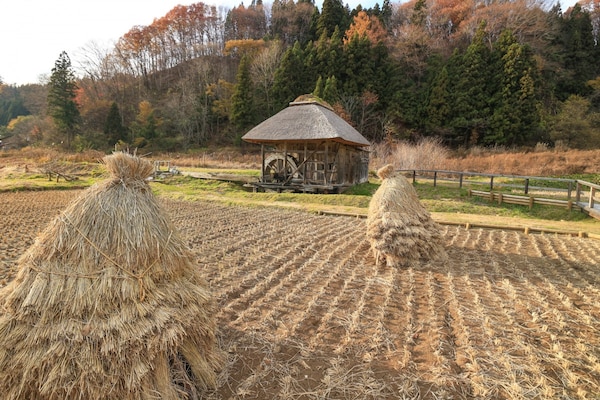
Occupying a bump on the southern edge of Aomori, the town of Takko directly borders Iwate and Akita Prefectures. While there are various rumors about the origin of the town’s name, the most persistent theory is that it originated from the indigenous Ainu people’s word tapukopu, meaning “low hill.”
Takko is mostly covered in forested mountains that bless the villagers with pure spring water. The farming, forestry and livestock industries are quite prosperous, but the region is best known for Takko Garlic.
For generations tracing back to the Edo Period (1603–1868), watermills attached to thatched homes dotted this settlement. Since the residents came to see their beloved mills as symbols of the town, they worked to protect them, but now only one watermill remains. It's set amidst the creeks that flow into the town, offering a final, priceless view of this hidden watermill village.
1. Oshika (Nagano)
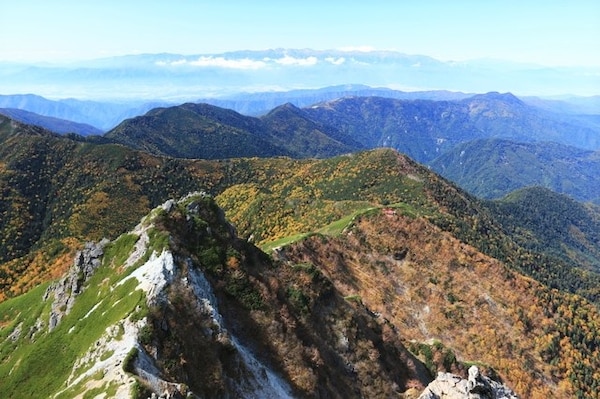
When the Alliance of Most Beautiful Village in Japan was formed in October 2005, it included seven villages and towns: Hokkaido’s Biei Town and Akaigawa Village, Yamagata’s Okura Village, Gifu’s Shirakawa Village, Tokushima's Kamikatsu Town, Kumamoto's Minamioguni Town and Nagano’s Oshika Village. The group has since expanded, however, and Nagano now leads all other prefectures with as many as seven villages and towns counted in its membership.
After weaving through narrow mountain roads, at the bottom of a ravine you’ll come to the village of Oshika, surrounded by the majestic natural vistas of the Southern Alps. Even though it’s a tiny village with a population of just 1,100, Oshika claims to be home to some of the happiest and liveliest people in Japan, with a longstanding culture that's constantly being reborn through a mixture of past and modern traditions. Visitors coming in will feel a refreshing sense of nostalgia wherever they're from.
Since it's surrounded by mountains, the image of Oshika changes with the seasons. Spring brings the cherry blossoms; in summer lush greenery is out in full; in fall the trees sparkle with autumn foliage; and in winter snow covers the mountains. You won’t be able to get the full experience of Oshika with just one visit!
- traverseworld.com (English)

